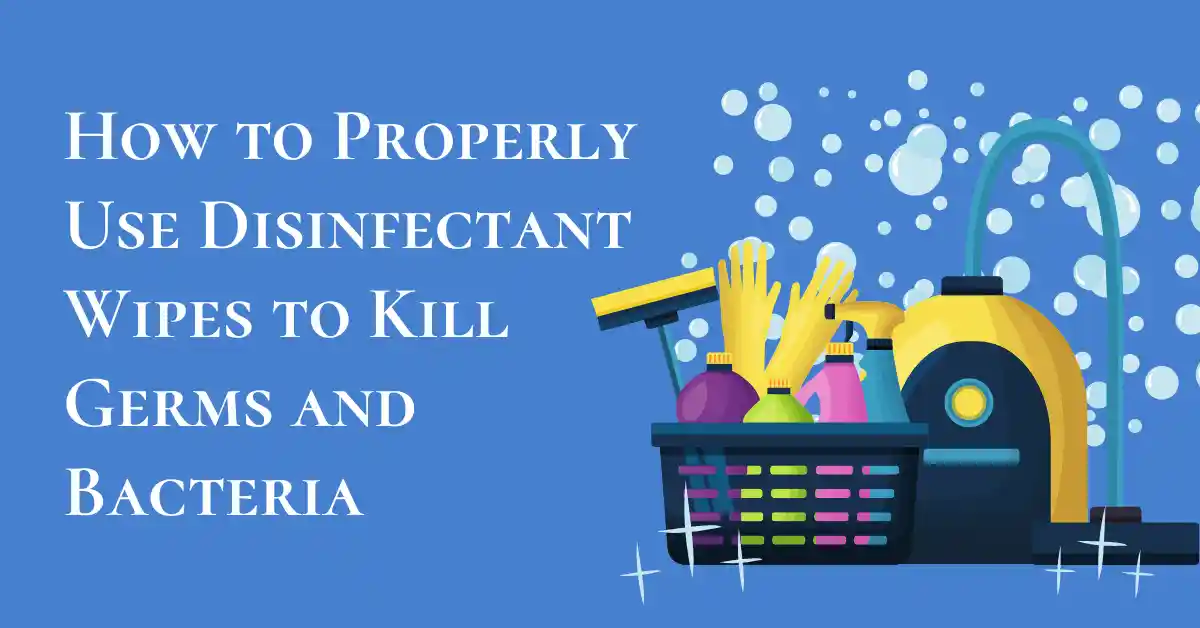Disinfectant wipes are a great way to kill germs and prevent cross-contamination in your home or office. However, they need to be used correctly.
According to the Centers for Disease Control and Prevention (CDC), disinfection typically requires a product to remain on a surface for some time.
Use on Hard Surfaces
Disinfectant wipes are a great way to clean and kill germs on hard, nonporous surfaces such as metal, plastic, glass, and wood. These types of surfaces are where viruses and bacteria like COVID-19 tend to stay longer than soft surfaces.
Wipes are also helpful in cleaning and sanitizing hands and other frequently touched areas. However, following the instructions on the label is essential to ensure the disinfectant is working correctly and not causing skin or eye irritation.
Before using wipes, remove all soil from the surface that will interfere with disinfecting. You can use a general-purpose cleaner or a cleaning wipe first to remove all dirt, stains, and other debris.
Then, place a disinfectant wipe on the surface and use it to wipe down the area. Be sure to follow the directions on the label about how long the wipe should be left on the surface.
It may take a few wipes to disinfect the surface properly. This is because all disinfectants need a certain amount of time to work. The time is called the dwell time and is listed on most disinfectant products.
Don’t Use it on Soft Surfaces
Disinfecting wipes on soft surfaces can cause a chemical reaction with the character. This can result in skin irritation and possibly even a rash.
The chemicals in disinfectant wipes may also affect children’s respiratory systems. They can cause asthma attacks or worsen conditions like allergies, according to Susan Pacheco, M.D., associate professor of pediatrics at the University of Texas McGovern Medical School and a spokesperson for the American Academy of Pediatrics, Council on Environmental Health.
For this reason, disinfectant wipes should not be used on soft surfaces, including rugs and carpeting. They also shouldn’t be used to disinfect unpainted wood or other absorbent materials.
To successfully kill surface germs, disinfectant wipes must stay wet for contact time. The amount of time needed depends on the type of disinfectant, its ingredients, and the germs you’re trying to kill.
Usually, the label will tell you the contact time and how long to leave the surface wet before wiping it off. It could be from 15 seconds to 10 minutes.
For this reason, if you’re using disinfectant wipes to clean surfaces in the home or office, follow the product’s directions and don’t dry the surface straight after you wipe it. This can defeat the purpose of disinfecting and potentially allow germs to thrive.
Don’t Use on Toys
Disinfectant wipes like Wipes.com are great at killing germs and bacteria, but they shouldn’t be used on toys. Germs spread so quickly between children’s hands and mouths that they can make their way to a toy with which your child may play.
Using disinfectant wipes on toys could lead to the growth of antibiotic-resistant bacteria known as superbugs, according to the Environmental Working Group. Additionally, overusing these wipes can kill off the disinfectant’s effectiveness.
To prevent this, make sure that the wipes you use are EPA-approved. Also, follow the label instructions for rinsing the wipes after you use them.
In addition, disinfecting wipes are not made for things like carpet or couch fabric, which can suck up the wipe’s moisture and make it hard to kill the germs. They work better on hard, nonporous surfaces like stainless steel and plastic.
For instance, Lysol’s website says small plastic toys without batteries can both be cleaned and sanitized with a trip through the dishwasher. However, if your toy is made of fabric and has electronics, you’ll want to wash it with mild soap and warm water before giving it back to your child.
You can also disinfect toys with diluted bleach. If the toy is nonporous and has no electronic components, you can place it in a bucket with a mixture of one-part bleach and ten parts water. Let the toy soak in the solution for five minutes, and then rinse it thoroughly with water.
Don’t Dry the Surface Straight After Wiping
Disinfectant wipes, such as Lysol or Clorox, can be a convenient and effective way to clean hard surfaces in your home. But if you misuse them, you could save time and money and fail to disinfect the surface thoroughly.
According to experts, the most important thing to remember when using disinfectant wipes is to not dry the surface straight after wiping it. The wipe must stay wet long enough to sanitize the surface thoroughly.
The amount of time it takes for a wipe to sanitize a surface depends on what germs the product is designed to kill. The label usually recommends how long it needs to remain wet before the disinfectant works. For example, Lysol and Clorox disinfecting wipes state that the surface should remain wet for four minutes after application to sanitize it thoroughly.
But Seventh Generation disinfecting wipes recommend letting the surface stay wet for 10 minutes before rinsing it with water. The drying time is also affected by room temperature and humidity.
In addition, it is essential to check the labels of disinfectant wipes to ensure they are disinfectant and not just all-purpose cleaning wipes. You can do this by checking the EPA label, which will list a number that shows whether or not the wipes are approved for use on human skin.
